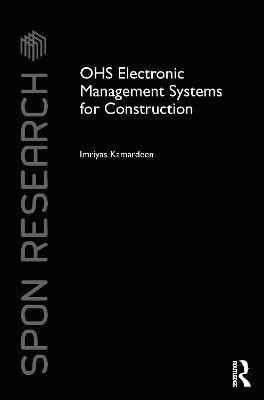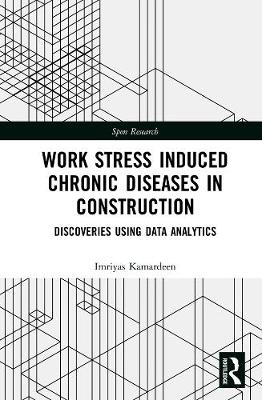Spon Research
2 total works
Occupational accidents have a massive personal and social cost as well as a major financial cost. The construction industry is one of the most dangerous industries, accounting for around 20-30% of all occupational deaths worldwide. The accompanying financial cost is either absorbed directly or passed on in the form of higher insurance costs. In addition, regulatory bodies have started to impose legal accountability on all the parties along the construction supply chain.
OHS is hard to implement. Construction projects are complex, with a fluid workforce, and the regulatory framework is highly elaborate. OHS Electronic Management Systems for Construction presents a theoretical framework which is designed to overcome these difficulties, integrating OHS management in construction using knowledge management and web technologies. This framework is explained in a clear step-by-step way, as are features such as a systematically developed corporate safety memory, and a virtual learning portal to facilitate on-demand safety training.
The ultimate aim of this book is to aid the development of an established safety culture at the organisational level, and the formation of an industry-wide community of safety practice. This is essential reading for OHS professionals and construction managers attempting to change their industry for the better, as well as advanced students and researchers.
This book aims to fill a gap in the current construction health and safety research and discover new knowledge about work stress induced chronic diseases among construction industry professionals. In achieving these aims, the book investigates:
- the nature and extent of psychosocial stressors experienced by construction professionals, stress management tactics applied and the impact on mental health
- the prevalence and occurrence patterns of serious chronic conditions such as insomnia, obesity, musculoskeletal disorders and vision impairment
- aetiological pathways from job stressors through chronic diseases to job performance.
While there are many studies, policies and regulations aiming to look after the health of construction workers, little attention is paid to construction professionals. By applying advanced analytical methods to data collected in a national survey of construction professionals in Australia, the author presents new scientific evidence which can be used to help establish equitable workers' compensation treatments and outcomes for construction professionals in line with other professions. Moreover, the research and analysis are underpinned by theories and literature from public health and epidemiological disciplines in addition to literature from construction, and work health, safety and wellbeing domains. It is essential reading for any health policy makers and researchers in the fields of health and safety and construction management.

